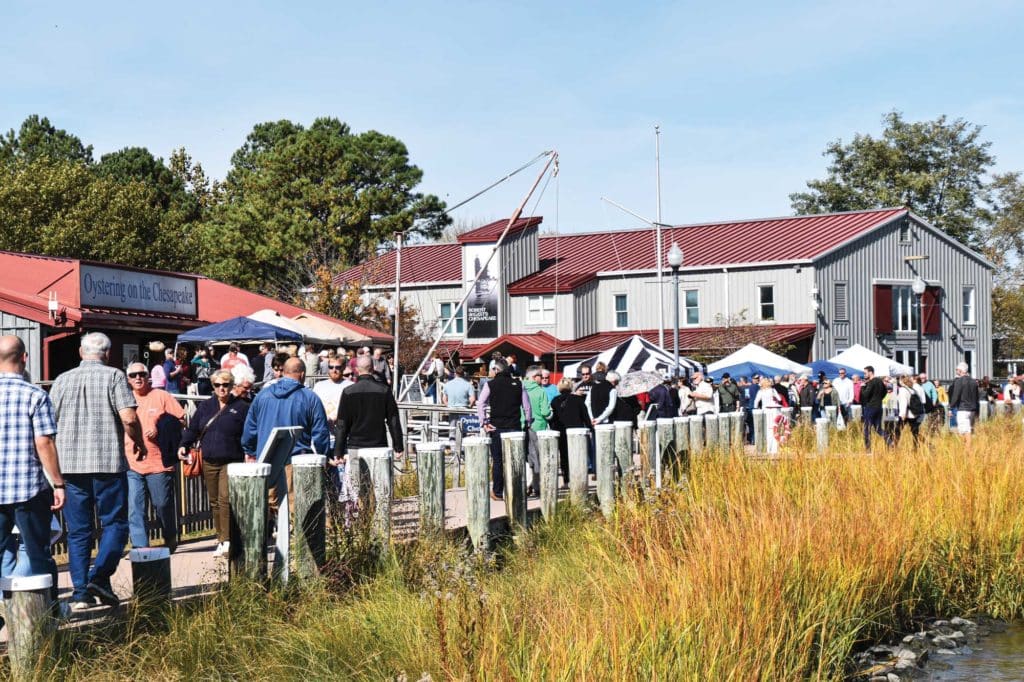
Oysters are as integral as water itself to the history and culture of Chesapeake Bay. Back in the 1600s, early settlers were amazed by their size and quantity; people would collect oysters by raking them or just scooping them up in their hands. Today, oyster aquaculture—planting and cultivating them instead of gathering them in the wild—is a fast-growing bay industry. The Chesapeake Bay Oyster Company alone reportedly grows more than 10 million of the mollusks every year.
Somebody has to eat all those oysters, and attendees at the annual Chesapeake Bay Maritime Museum’s OysterFest sure do their part. The event, held in late October, is a study in oyster overload, celebrating everything from the people and boats that collect them to the culinary artisans who create new ways to cook and serve them. Oyster lovers come by boat, car and foot to get their fix of favorite recipes.
Oyster mac and cheese? You bet. Chesapeake Bay oyster chowder? Of course. Oyster fritters and gumbo? Heck yeah. And this year, it’s looking like there will be a new “oyster-stew crawl,” with punch cards for attendees to taste all the different local varieties that will be part of the festival. “It’s a perfect time of year for that,” says Katie Emslie, marketing coordinator for the museum. “It’s a little cooler, and you’re in the mood for something a little warmer.”
OysterFest is one of the museum’s biggest annual events, and the location and setup can make attending the festival part of a fun day for the whole family. After filling up on oyster everything, attendees can check out the museum’s floating fleet, which includes classic boats such as the 1909 dredger Old Point and 1934 Hoopers Island Dovetail Martha that were used for oystering and more. Attendees can also try their hand at tonging and nippering for oysters, with expert teachers on hand. It’s not as easy as raking, but it’s absolutely part of the local legacy.
Like a Fine Wine
Because oysters filter so much water (as much as 1.3 gallons per hour), they develop a flavor based on their environment—similar to wine grapes and terroir. Oysters can be briny, sweet, buttery and more.
Rain, Rain Stay Away
Bad storms and flooding forced the cancellation of last year’s OysterFest celebration. Generally speaking, the event is one of the Chesapeake Bay Maritime Museum’s biggest festivals each year.








